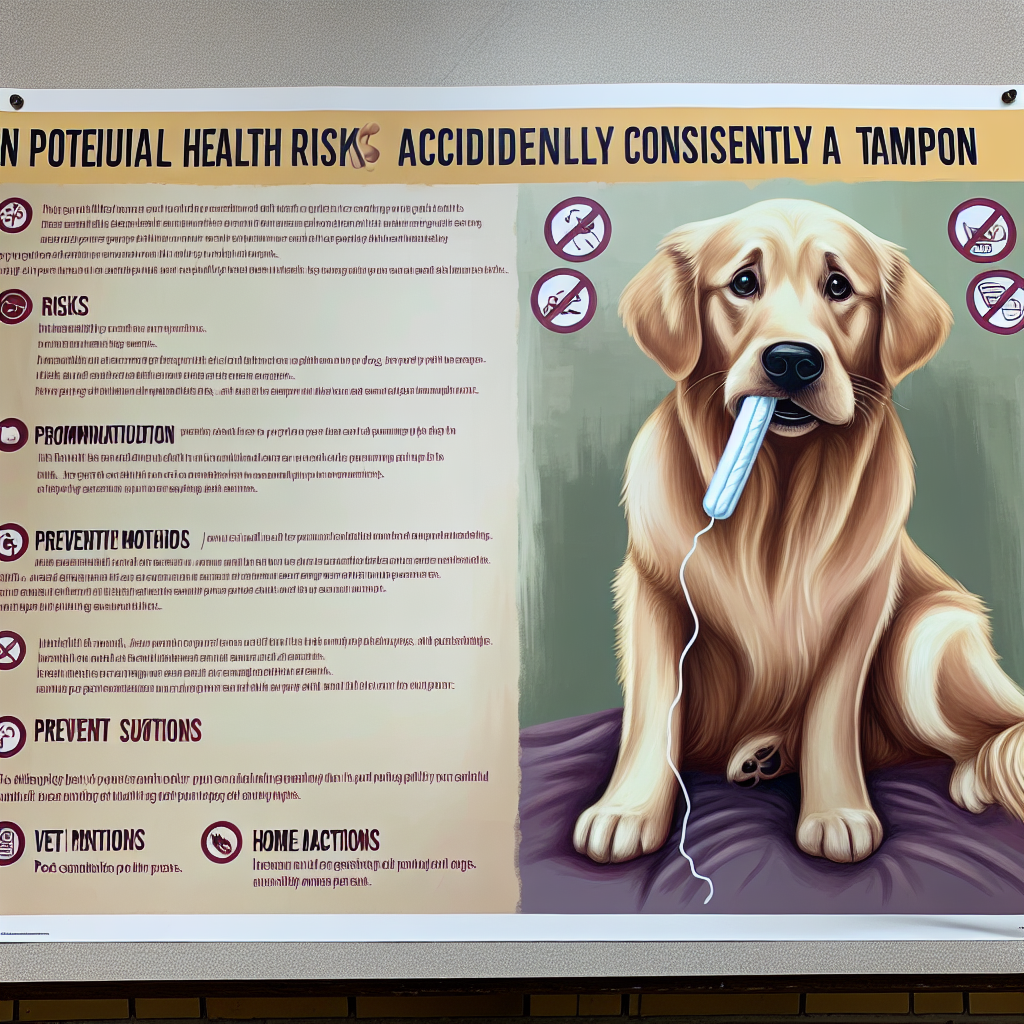===INTRO:===
When your dog eats a tampon, the situation can escalate quickly from a benign curiosity to a serious medical concern. Understanding the risks associated with tampon ingestion in dogs is critical for every pet owner. Not only can it lead to dangerous health complications, but it can also create emotional distress for both you and your furry companion. In this article, we will explore the dangers of tampon ingestion in dogs, along with effective solutions and preventive measures that can protect your pet from this little-known hazard.
The Dangers of Tampon Ingestion in Dogs: What You Need to Know
Tampons pose several immediate risks when ingested by dogs. First and foremost, they can lead to gastrointestinal obstruction, a condition that occurs when a foreign object gets lodged in the digestive tract. This blockage can prevent food and waste from moving through the intestines, leading to severe discomfort, vomiting, and in some cases, life-threatening situations requiring emergency surgery. Understanding this risk is crucial, as the symptoms of obstruction might not be immediately apparent, and delay in seeking treatment can exacerbate the situation significantly.
Moreover, tampons are composed of absorbent materials that can expand when wet. When a tampon is ingested, it can swell in the stomach or intestines, worsening the obstruction and potentially causing rupture or perforation of the bowel. This not only creates immediate danger but can also lead to peritonitis, a serious and often fatal infection of the abdominal cavity. Pet owners should be acutely aware of these dangers and the urgency in addressing them, as time is of the essence when it comes to treating any kind of obstruction.
Additionally, the materials and chemicals used in the production of tampons may lead to poisoning or irritation if ingested. Some tampons are bleached and may contain harmful additives that can affect your dog’s health. Symptoms can vary from gastrointestinal upset to severe reactions that necessitate veterinary intervention. Recognizing these potential dangers is the first step in ensuring your dog’s safety.
Effective Solutions and Preventive Measures for Pet Owners
Preventive measures are essential in safeguarding your pet from the dangers of tampon ingestion. One of the most effective strategies is to maintain a clean and organized living space, particularly in areas where you keep personal hygiene products. Storing tampons in a secure cabinet or a closed container can significantly reduce the likelihood of your curious pet accessing them. Creating an environment that minimizes temptation can spare both you and your dog from stress and health risks.
Training your dog to respond to commands like "leave it" or "drop it" is also a valuable tactic to deter them from picking up potentially harmful objects. Positive reinforcement techniques, such as rewarding your dog for obeying commands, can foster good behavior and enhance their understanding of what is permissible. Establishing strong communication with your dog not only helps prevent dangerous situations but also enriches your relationship, creating a deeper bond.
In cases where prevention fails and your dog has ingested a tampon, it is crucial to act quickly. Contact your veterinarian immediately if you suspect ingestion. Providing them with information about your dog’s size, the type of tampon, and the time elapsed since ingestion can aid in determining the best course of action. Whether that’s inducing vomiting, performing an endoscopy, or surgical intervention, swift action can save your dog’s life and minimize health complications.
===OUTRO:===
In conclusion, understanding the risks associated with tampon ingestion in dogs is essential for every pet owner. By implementing effective preventive measures and knowing how to respond in the event of ingestion, you can safeguard your beloved companion from harm. Remember, maintaining a tidy environment, training your dog, and being aware of the signs of distress can make a significant difference in your dog’s health and well-being. If you find yourself facing this unpleasant scenario, don’t hesitate to consult your veterinarian for expert guidance. Together, we can ensure a safer and healthier life for our furry friends.
Measuring Your Dog’s Height: A Comprehensive GuideUnderstanding How Dogs Become Infested with FleasUnderstanding the Lifespan of Pug Dogs: What to ExpectRelevant LinkRelevant LinkRelevant Link
